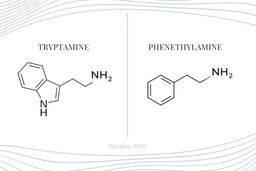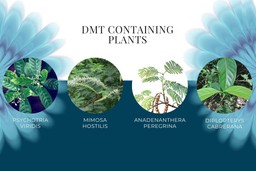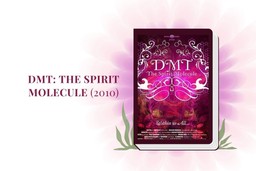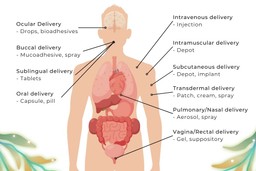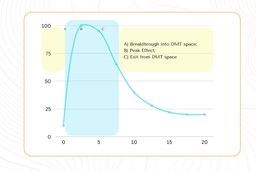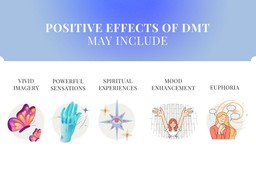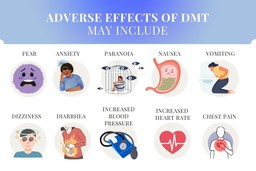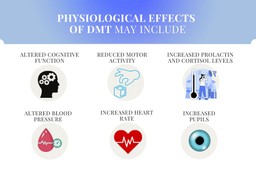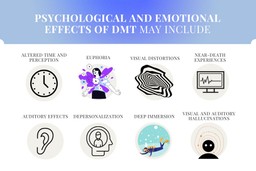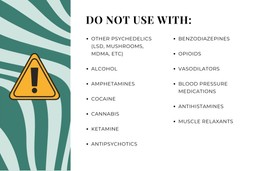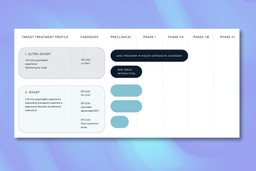Here you will find our comprehensive and complete DMT Substance Guide, where we explore the pharmacology and chemistry of this substance. We also explore current and past scientific research, history, laws, effects, clinical trials, psychotherapeutic applications, and more!
After exploring the highlights and history of DMT, we investigate its many potential treatment applications with a focus on past, current, and planned clinical research.
Drug Class
DMT (N,N-Dimethyltryptamine) is a psychedelic drug of the ‘tryptamine’ class. Specifically, in terms of categorizing this chemical, DMT is one of the four classical psychedelics, along with LSD, mescaline, and psilocybin. These compounds are considered the world’s most historically significant and most commonly used psychedelic substances.
Classical psychedelics all act as agonists at (in other words, they ‘activate’, unlock, or attach to in a specific way) the serotonin 5-HT2A receptor. This receptor is abundant in specific regions of the human brain and is implicated in inducing psychedelic effects in humans. Mescaline is slightly different, as it is a phenethylamine rather than a tryptamine, and has additional ways of acting in our brains. Both mescaline and MDMA are classed as ‘phenethylamines’. (See our Mescaline Substance Guide and MDMA Substance Guide.)
Tryptamines are all derived from the common amino acid (protein) tryptophan. Humans are able to produce tryptamines naturally inside our bodies from this protein precursor. Serotonin and melatonin are two examples of other naturally occurring tryptamines produced in human beings from tryptophan. (Zhao et al., 2019). The chemical name for serotonin is actually ‘5-hydroxytryptamine’. DMT is thought to be derived from tryptophan in the human body/brain in a similar fashion. “In vitro and animal studies have found endogenous psychedelic tryptamines in humans and also found tryptamine metabolites in the pineal gland. In addition to DMT, 5-hydroxy-DMT (bufotenin, HDMT) and 5-methoxy-DMT (MDMT) have been reported as endogenous substances in humans.” (Gomes et al., 2014)
Specifically, “N,N-dimethyltryptamine (DMT), a psychedelic compound identified endogenously in mammals, is biosynthesized by aromatic-L-amino acid decarboxylase (AADC) and indolethylamine-N-methyltransferase (INMT) … Importantly, INMT and AADC transcripts are co-expressed in the same brain cells, providing a plausible mechanism for the cellular synthesis of DMT in the mammalian neocortex … present data suggest that DMT in the brain does not originate from peripheral sources but, rather, is produced locally in specific brain tissues.” (Dean et al., 2019)
Below is a short video that explains DMT and its chemistry in greater detail:
What is DMT?
DMT is one of the most widespread naturally existing psychedelic substances on the planet as it is produced in nature by a wide variety of different plant species all over the world. However, plants are not the only species to produce DMT. Several different animals including rabbits, rats, and amazingly even human beings have been scientifically proven to naturally biosynthesize DMT. That said, the specific role of DMT in our own human physiology is not well characterized and requires further investigation. There is overwhelming evidence that humans are able to produce not only DMT itself but also a chemically related compound called 5-OH-DMT. The data regarding endogenous production of another naturally occurring psychedelic, 5-MeO-DMT, by humans, is far less conclusive. (Cameron & Olson, 2018).
As DMT exists naturally in so many plant species it can therefore be extracted and isolated from various plants and plant tissues. The substance is most commonly synthesized from plants with a large natural concentration of produced DMT, though it is also easily produced chemically in a lab. Like Nature, chemists have found simple ways to synthesize DMT. The most popular approach from the peer-reviewed literature is the ability to produce large amounts of pure DMT with reasonably high yields in one single step. The chemical typically exists in pure form as a white or yellow/brown crystallized powder with a very distinct smell.
A wide variety of DMT-containing plants have been used throughout human history in places all across the globe, but some of the more commonly utilized plant species with a high concentration of DMT include:
Psychotria viridis is a perennial shrub also known as ‘Chacruna’, ‘Chacrona’, or ‘Chaqruy’. It is typically one of the two main ingredients in the powerful Ayahuasca brew, usually along with the vine Banisteriopsis caapi. Amongst the Indigenous peoples of the Amazon rainforest, it is known as a “plant teacher” with a long history of entheogenic (connecting to spirit) use.
Mimosa hostilis is a DMT-containing plant that can be used to create another psychoactive beverage called ‘Jurema’ or ‘Yurema’ – a psychedelic drink historically consumed for religious and medical purposes by indigenous peoples in northeastern Brazil. This species is particularly unique because it already naturally contains a substance similar to the other ingredients used in Ayahuasca, called Yuremamine, which synergistically ensures that this particular plant’s DMT is orally active on its own without having to add another agent. (Jouko J Vepsäläinen et al., 2005)
Anadenanthera peregrina is also known as ‘Yopo’, ‘Cohoba’, or ‘Calcium Tree’. It is native to areas in the Caribbean and South America and has been traditionally used in both healing and religious rituals amongst Indigenous cultures in areas where it grows. The tree’s DMT-containing seeds are made into a powerful visionary snuff, which several South American tribes have used for over 4,000 years! Shamans use Yopo as a gateway to commune with spirits or uncover cosmic truths. “Users first stiffen for a time, then their limbs loosen and their heads drop. They insert the powder into their nose through a long bone, with one end sticking into the nostril and the other into the powder. The effects come on very quickly, immediately they feel that the room is inverted and that they are in contact with spirits.” (Stobo, 2021)
Diplopterys cabrerana, also known as Chaliponga, is a common DMT-containing plant added to some Ayahuasca preparations. Interestingly, this species also produces 5-MeO-DMT; the leaves store methyltryptamine and trace amounts of bufotenin.
To demonstrate the widespread existence of this naturally occurring psychedelic compound, below is a comprehensive (though not all-inclusive) list of a few other plants that contain DMT, 5-MeO-DMT, and various other related naturally occurring tryptamines:
ACANTHACEAE
- Justicia pectoralis: Leaves contain DMT.
AGARICACEAE
- Amanita citrina: Plant contains DMT, 5MeODMT.
- Amanita porphyria: Plant contains 5MeODMT.
AIZOACEAE
- Delosperma sp.: Plant contains DMT.
GRAMINEAE
- Arundo donax: Plant contains 5-methoxy-N-methyltryptamine, leaves contain bufotenin, DMT, and flower contains N,N-dimethyltryptamine methohydroxide.
- Phalaris arundinacea: Leaves and Plant contain DMT and 5MeODMT.
- Phalaris tuberosa (P. aquatica): Leaves contain DMT and 5MeODMT.
- Phragmites australis: Roots contain DMT.
LEGUMINOSAE
- Acacia confusa: Stem contains DMT.
- Acacia maidenii: Bark contains DMT.
- Acacia nubica: Leaves contain DMT.
- Acacia phlebophylla: Leaves contain DMT.
- Acacia polyacantha subsp. campylacantha: Leaves contain DMT.
- Acacia Senegal: Leaves contain DMT.
- Acacia simplicifolia: Stem, bark, and leaves contain DMT.
- Anadenanthera colubrina var. cebil (Piptadenia macrocarpa): Stem and pods contain DMT, seeds contain bufotenin and DMT.
- Anadenanthera excelsa: Stem and pods contain DMT.
- Anadenanthera peregrina: Stem, bark of stem, pods, and leaves contain DMT, 5MeODMT. Bark of tree contains 5MeODMT, 5-methoxy-N-methyltryptamine, and N-methyltryptamine. Plant contains bufotenin. Fruit of the plant contains bufotenin oxide, DMT, and N,N-dimethyltryptamine oxide.
- Desmanthus illineonsis: Roots and root bark contain DMT.
- Desmodium caudatum: Stem and roots contain DMT.
- Desmodium gangeticum: Plant (without flowers) contains DMT and 5MeODMT.
- Desmodium gyrans: Leaves and roots contain DMT and 5MeODMT.
- Desmodium pulchellum: Plant contains DMT and 5MeODMT.
- Desmodium racemosum: Plant contains 5MeODMT.
- Despedeza bicolor va. Japonica: Leaves and bark of roots contain DMT and 5MeODMT. Bark of tree also contains 5-methoxy-N-methyltryptamine and N-methyltryptamine. Plant contains bufotenin. Fruit contains bufotenin oxide, DMT, and N,N-dimethyltryptamine oxide.
- Mimosa hostilis: Roots of the plant contain DMT.
- Mimosa scabrella: Bark of the stem contains DMT.
- Mimosa tenuiflora: Bark of the stem contains DMT and 5MeODMT.
- Mucuna pruriens: Leaves, seeds, stem, and roots contain DMT and 5MeODMT.
- Petalostylis labicheoides var. cassioides: Leaves and stem contain DMT.
MALPIGHIACEAE
- Banisteriopsis muricata (B. argentea): Stem and leaves contain DMT.
- Diplopterys cabrerana (Banisteriopsis rusbyana): Leaves contain DMT and 5MeODMT.
MYRISTICACEAE
- Iryanthera ulei: Bark of stem contains 5MeODMT.
- Osteophloem platyspermum: Bark of stem contains DMT and 5MeODMT.
- Virola calophylla: Plant contains DMT and 5MeODMT, bark contains 5MeODMT, DMT, and N-methyltryptamine.
- Virola carinata: Leaves contain DMT.
- Virola divergens: Leaves contain DMT.
- Virola elongata: Leaves and bark of the stem contain DMT and 5MeODMT.
- Virola melinonii: Bark contains DMT.
- Virola multinervia: Roots and bark contain DMT and 5MeODMT.
- Virola pavonis: Leaves contain DMT.
- Virola peruviana: Bark of stem contains DMT and 5MeODMT.
- Virola rufula: Bark, stem, roots, and leaves contain DMT and 5MeODMT.
- Virola sebifera: Bark contains DMT.
- Virola theiodora: Plant contains DMT and 5MeODMT.
- Virola venosa: Leaves and roots contain DMT and 5MeODMT.
OCHNACEAE
- Testulea gabonensis: Bark and roots contain DMT.
POLYGONACEAE
- Erigonum sp.: Plant contains DMT.
RUBIACEAE
- Psychotria carthaginensis: Leaves contain DMT and N-methyltryptamine.
- Psychotria viridis (P. psychotriaefolia): Leaves contain DMT and N-methyltryptamine.
RUTACEAE
- Dictyoloma incanescens: Leaves contain 5MeODMT.
- Dutaillyea drupacea: Leaves contain 5MeODMT.
- Dutailier oreophila: Leaves contain 5MeODMT.
- Evodia rutaecarpa: Leaves contain 5MeODMT.
- Limonia acidissima: Stem contains 5 MeODMT.
- Pilocarpus organensis: Leaves contain 5MeODMT.
- Vepris ampody: Leaves contain DMT.
- Zanthoxylum arborescens: Leaves contain DMT.
- Zanthoxylum procerum: Leaves contain DMT.
(Khan et al., 1970)
There are a wide variety of DMT-like molecules, all varying in chemical structure and effect. Some of the better-known/studied variations include:
NN-DMT
This is what most people refer to when they say ‘DMT’, primarily understood to mean N,N-dimethyltryptamine. It is important to understand that this specific molecule has many, many other closely related chemical cousins, some of which are explored in greater detail below. One should therefore take great care to not confuse them all as being the same. Each is significantly unique on many levels and their subjective experiences and pharmacology are also distinct. Some of the most commonly known variants include:
5-MeO-DMT
This special substance is another naturally occurring psychedelic substance found in various plant species, but also some animal species. Most notably, this substance can be found in large amounts in a toad species Incilius alvarius, also known as the ‘Colorado River Toad’ or the ‘Sonoran Desert Toad’ as it is found mainly in the Sonoran Desert in North America. Incillius is the broadly accepted and commonly used current name for this amphibian whose secretions can significantly alter human consciousness – often reaching up to 15% 5-MeO-DMT by weight. However, many in the psychedelic community continue to incorrectly refer to this infamous amphibian by its pre-2009 name: Bufo Alvarius. (Domsac, 2022). In any case, it is essential to understand that 5-MeO-DMT differs significantly from N,N-DMT regarding the substances’ pharmacology, subjective effects, potential side effects, and therapeutic potential.
5-OH-DMT
Bufotenin (5-hydroxy-N,N-dimethyltryptamine or 5-OH-DMT) is a psychedelic hallucinogen found in mushrooms (Amanita species), higher order plants (Leguminosae family), and in the venom and eggs of several species of toads in the Bufo genus. Bufotenin was first isolated from Bufo alvarius (now known as Incilius alvarius, as per the details in the paragraph above) in 1968. Shortly afterward, the “psychedelic toad” gained immediate worldwide notoriety. The name bufotenin is derived from bufotoxin, a general term referring to several chemical poisons secreted from the parotoid glands of these very special toads. Their glands can naturally produce a variety of biologically active toxins that vary in content from species to species. The term and purported idea of “toad licking” originated in the United States, however, licking toads to achieve an active psychedelic effect is, unfortunately, a widely believed—though thoroughly false—urban myth. This is because bufotenin, like DMT, is rapidly metabolized by the body and thus loses almost all psychoactive activity when taken orally. However, its effects can still be felt if taken in combination with other drugs that slow down or inhibit its metabolism, similar to DMT itself. The effective hallucinogenic dose in humans is 50–100 mg and the effects typically last for only 45–60 min. Bufotenin-induced hallucinations have often been called a “businessman’s trip.”
More than 200 different species of similar toads exist around the world, though perhaps the most commonly known is still Incillius alvarius. Interestingly, the Bufo marinus toad is native to the Amazon region and another related European species is called Bufo vulgaris. Historically, Bufo toads have been used throughout the world for centuries. The skin and venom have been used in medicines and hallucinogenic tribal rituals that date back to 2000 BC making the practice over 4000 years old. Bufo and other toads were often included in many mystical and cultural charms for sexuality and rain fertility. They are also commonly used in burial ceremonies and are found in large numbers at burial sites in Mexico. Chinese healers have also used Bufo venom for thousands of years in a potion called Ch’an Su. Bufo toads have a role in the medicinal history of Nepal, Tibet, India, Germany, and Africa. (Khan et al., 1970)
N-monomethyltrifmin
This is a DMT analogue found naturally in Yopo along with N,N-dimethyltryptamine. 5-MeO-DMT is also produced naturally in the plant matter along with several other related bases. (Yopo - Guia Completo 2021)
4-phosphoryloxy-N,N-dimethyltriptamine
Interestingly, this is actually the chemical name for Psilocybin! Psilocin (the substance that psilocybin is converted to in the body) is chemically named: 4-hydroxy-DMT. (See our Psilocybin Substance Guide)
History and Culture
Part I – A Rich and Interesting Traditional Lineage
Several Indigenous cultures of South America have long used plants containing DMT for both religious and spiritual purposes as well as medical and therapeutic uses. Traditionally, the substance was consumed by snuffing/snorting it or preparing it as a tea with other ingredients.
The very first recorded report of the effects of this chemical dates back to 1496, in the form of witnessing the use of a psychedelic snuff. Stafford reports in the Psychedelics Encyclopedia that Spanish Friar Ramon Pane, who accompanied Columbus on his second voyage to the ‘New World’, was the first known person to have recorded Indigenous use of this substance. His report was first published in 1511 in Martyr’s descriptions of the New World. (Meyer, In Depth Report Regarding DMT)
Later, in 1801, a German explorer named Alexander Von Humboldt also noted the preparation of a psychedelic snorted plant mixture called ‘Yopo’ by the indigenous Maipures tribes who lived in what is now modern-day Venezuela and Colombia. (Anadenanthera – Yopo, Cebil, Villca)
Archaeological evidence demonstrates that human beings utilized these same Yopo seeds to attain psychedelic states dating back over 4,000 years (Stobo, 2021). This powerful substance was routinely utilized for both medical and religious purposes amongst the many Indigenous peoples who lived in areas where the tree naturally grew. Nowadays, only the Yanomami and the Piaroa tribes of the Amazon jungle regularly use this substance. This is most likely because they have somehow managed to avoid the influences and ideas of the ‘Western World’ and thus have been able to successfully preserve their critically important traditional ways of working with these natural plant medicines for spiritual and healing purposes. (Yopo - Guia Completo 2021)
Ayahuasca is a combination of different plants containing both DMT and harmala alkaloids. This special and unique brew will be discussed and explored further in another substance guide to be published later on this website so stay tuned for details!
Part II – Modern History
In the ‘Western World,’ a German-Canadian chemist by the name of Richard Helmuth Fredrick Manske was the first person to successfully synthesize DMT. His work was published in November 1931 in the Canadian Journal of Research. Manske was born in 1901 in Berlin and immigrated to Canada with his parents in 1906. (Richard Manske – Scientist 2021)
Interestingly, when DMT was first synthesized, the substance’s psychedelic properties were not known and neither was its widespread natural occurrence in and production by plants and humans. DMT wasn’t thought of as being psychoactive at the time because any tested oral administration had absolutely no discernible effect whatsoever on the many volunteers who tried taking it this way. This was the case even when consuming extremely large doses of a gram or more by mouth. Only many years later—when it was finally injected for the first time—were DMT’s notable psychoactive effects able to be documented by modern researchers.
Indeed, the psychedelic properties of DMT were not discovered until a full 25 years later. This was when the first published scientific research by Dr. Stephen Szára indicated that DMT did in fact possess extremely potent psychoactive properties once injected. Felt by many to be the very first published ‘DMT trip report’, the following record is an original quote from what is likely the very first successful psychedelic DMT administration ever in a laboratory research setting:
“Within 5 minutes of administration of the higher dose, Dr Szára noted a distinct physiological response of tingling sensations, increased pupil dilation, and an elevation in blood pressure and heart rate. These sensations were accompanied by visual hallucinations consisting of icons, colorful geometry, and mask-wearing entities. At the peak of his experience, involuntary hand movements were present, and his ‘visual space’ was completely filled with optical hallucinations to the degree where he could not describe what was in his immediate surroundings. After 45 minutes, most of his ‘symptoms’ had largely subsided, and thus, he was able to describe his subjective experience.” (White & Kovačík, 2021)
Beginning in the 1950s, scientific research on DMT started in earnest with many studies looking into the presence of DMT in the human body to determine if it was a possible neurochemical involved in schizophrenia. Dr. Szára later became the very first researcher in the world to publish a report in English on this subject whilst working at the U.S. National Institute of Mental Health in Washington, DC. (Meyer, In Depth Report Regarding DMT)
Unfortunately, soon after this research started it was forcibly shut down again due to the ‘War on Drugs’. In the year 1970 Congressional laws passed in the USA made further investigations on DMT and many other psychedelics nearly impossible for scientists. Very swiftly, all research investigations into these miraculous substances sadly ceased to exist with many labs being shut down mid-experiment. Scientific progress in this area then came to an effective standstill for nearly twenty years. One can only imagine where the human race and the planet might possibly be today if only scientific research on psychedelics was allowed to freely continue and grow instead.
That being said, scientific investigations on psychedelics were indeed thankfully finally allowed to resume in the 1990s – first with Dr. Strassman’s DMT studies and then with many other substances and researchers following suit. A significant quantity of high-quality scientific research has thankfully continued to be published ever since at an astoundingly rapid pace. As of today in 2023, there have been many recent drug development trials and academic studies produced which will be examined later in great detail, however, this section will focus primarily on the past historical research that has occurred with DMT. For more up-to-date information reflecting the latest ideas and studies please scroll down to the section entitled “Recent Research and Clinical Trials” further below.
Historical Research and Clinical Trials
1931 | German-Canadian chemist Dr. Richard Manske synthesizes DMT for the first time.
1936 | Japanese chemist Toshio Hoshino synthesizes 5-MeO-DMT for the first time. (DMT Patent Tracker, n.d.)
1956 | The first scientific publication showing the effects of DMT was published by Dr. Szara when DMT was administered to 20 healthy participants (his physician co-workers!).
Szara was a Hungarian psychiatrist who many considered to be the “Father of DMT”. He was the first to study the psychotropic effects of DMT and injected himself and his physician colleagues with the substance. This was after synthesizing it as an alternative psychotherapeutic molecule to LSD after his order to Sandoz was rejected because he lived behind the Iron Curtain. (Wirz-Justice, 2021)
1950-1970 | During the “Golden Age of Psychedelic Research”, multiple studies were conducted and published on using DMT (and many other psychedelics) for mental health disorders.
“The percentage of successful, ecstatic sessions ran high–over ninety percent. The set-setting hypothesis clearly held for DMT in regard to positive experiences. But there were certain definite characteristics of the DMT experience which were markedly different from the standard psychedelics–LSD, psilocybin, mescaline. First of all, the duration. The eight-hour LSD transformation was reduced to around thirty minutes. The intensity was greater as well. This is to say, the shattering of learned form perception, the collapse of learned structure was much more pronounced. ‘Eyes closed’ produced a soft, silent, lightning fast, whirling dance of incredible cellular forms–acre upon acre, mile upon mile of softly-spinning organic forms. A swirling, tumbling, soft rocket-ride through the factory of tissue. The variety and irreality of the precise, exquisite, feathery clockwork organic machinery.” (Leary, 2003)
1958 | DMT was administered to schizophrenic patients by Boszormenyi & Szara to evaluate its potential therapeutic use.
1971 | DMT was prohibited and placed on the list of Schedule 1 substances. This category of drugs officially has “no medical benefit and a high potential for abuse”. This move swiftly and effectively ended all research into the therapeutic potential of DMT for almost 20 years.
1990-1995 | Dr. Strassman began researching DMT and conducted various studies on its safety, pharmacology, and effects.
DMT In Popular Culture
Rick Strassman, MD, published a pioneering book on DMT over 20 years ago in 2001 about his breakthrough scientific studies appropriately titled DMT: The Spirit Molecule. This much-needed tome provided in-depth scientific knowledge and academic insight into this mysterious but naturally occurring substance. The book described the groundbreaking psychedelic research that effectively kickstarted the so-called ‘Psychedelic Renaissance’ that many would say we are currently benefiting from today. Strassman’s studies from 1990 to 1995 were therefore groundbreaking in many ways as they were the first clinical psychedelic trials allowed to be performed since all research on these molecules was abruptly shut down in the 1970s.
“Let’s consider the proposal that when our volunteers journeyed to the further bounds of DMT’s reach, when they felt as if they were somewhere else, they were indeed perceiving different levels of reality. The alternate levels are as real as this one. It’s just that we cannot perceive them most of the time. In making this suggestion, I’m not discarding the brain chemistry and psychological models. Rather, I wish to add to the options we entertain in attempting to develop explanations that are helpful to volunteers, intellectually satisfying to researchers, and perhaps even testable using methods not yet invented but theoretically possible. Returning to the TV analogy, these cases suggest that, rather than merely adjusting the brightness, contrast, and color of the previous program, we have changed the channel. No longer is the show we are watching everyday reality, Channel Normal. DMT provides regular, repeated, and reliable access to “other” channels. The other planes of existence are always there. In fact, they are right here, transmitting all the time! But we cannot perceive them because we are not designed to do so; our hard-wiring keeps us tuned in to Channel Normal. It takes only a second or two – the few heartbeats the spirit molecule requires to make its way to the brain – to change the channel, to open our mind to these other planes of existence.” (Strassman, 2001)
Strassman’s book was later turned into a documentary movie by the director Mitch Schultz, also titled: DMT: The Spirit Molecule (2010)
You can watch the movie trailer here:
Finally, a book named ‘TiHKAL’ (Tryptamines I Have Known and Loved) was also published by the famous chemist Alexander “Sasha” Shulgin and his wife and psychotherapist Ann Shulgin where they discuss DMT in great detail. (See also ‘PiHKAL’ in our Mescaline Substance Guide.)
Legal Status
USA
In the United States, the chemical DMT is classified as a Schedule I controlled substance. DMT is a prohibited substance in most other parts of the world. Federal laws aside, many cities in the United States have decriminalized all entheogenic plants and fungi at the municipal level, including the plants used to produce ayahuasca. In Colorado, state voters passed the Natural Medicine Health Act in 2022 to enable adults to access five psychedelic substances, including DMT, in certified centers under the supervision of licensed guides. Other states have planned similar initiatives, separate from the simultaneous and currently still ongoing process of getting FDA approval for these medicines for the treatment of multiple different health conditions. In the United States, 5-MeO-DMT is also a Schedule I substance, which makes it illegal to manufacture, buy, possess, or distribute (sell, trade, or gift) without a DEA license effective as of January 19, 2011.
Canada
In Canada, “N,N–Dimethyltryptamine (DMT) (3–[(2–dimethylamino) ethyl]indole) and any salt thereof” is listed under Schedule III to the Controlled Drugs and Substances Act (CDSA) making N,N-DMT illegal in Canada. The CDSA is Canada’s comprehensive federal drug control and prohibition legislation. (Consolidated Federal Laws of Canada, Controlled Drugs and Substances Act 2023)
“DMT was initially prohibited in Canada in 1968 when it was designated a controlled substance under the Food and Drugs Act. DMT is now prohibited under Schedule III of the Controlled Drugs and Substances Act. The Canadian government, however, permits its use in the form of ayahuasca through s. 56 exemptions for qualifying ayahuasca churches.” (Is DMT (Ayahuasca) Legal?, 2023)
Interestingly though, “5-MeO-DMT is not a listed substance under the Controlled Drugs and Substances Act. As such, personal possession does not appear to be subject to criminal prohibition.” (Consolidated Federal Laws of Canada, Controlled Drugs and Substances Act 2023.) In other words, 5-MeO-DMT is currently: “…legal for personal use and possession in Canada. Though sale, distribution, and other activities involving the substance are illegal under Canadian federal law.” (Is 5-MEO-DMT (Toad Venom) legal?, 2023). The reason the sale and distribution of 5-MeO-DMT is illegal is because the Food and Drugs Act basically prohibits the distribution (with or without consideration) of anything qualifying as a “drug” under the statute without regulatory authorization.
More information on the laws surrounding DMT, 5-MeO DMT, and many other psychedelic substances in Canada can be found at the PsychedelicLaw.ca website.
DMT and 5-MeO-DMT Laws in Other Countries Around the World
Australia
South Australia controls “any plant containing DMT including any plant of the species Piptadenia Peregrina”. See Controlled Substances (General) Regulations 2000: Schedule 3. (Last updated Mar 17, 2009)
Belgium
5-MeO-DMT is not controlled under Belgian law, although DMT is. (DMT is controlled under the 1971 UN Convention.) (Last updated Aug 27, 2013)
Brazil
DMT is listed as a controlled substance, making production, distribution, or possession illegal.
Denmark
As of December 1, 2004, 5-MeO-DMT is legally restricted to “medical or scientific purposes.” See EMCDDA. DMT is reportedly on the “B-List” of drugs. (Last updated June 24, 2012)
Estonia
DMT is Schedule I.
Finland
5-MeO-DMT was banned in Finland in December 2014. A new government regulation was enacted in Finland that banned over 100 psychoactive chemicals. See Finland’s Prohibited Psychoactive Substances: December 19, 2014. (Last updated Dec 26, 2014)
Germany
5-MeO-DMT is Schedule I / Highest level of control, unable to be prescribed, manufactured, or possessed as of Sep, 1999. (Listed as [2-(5-Methoxyindol-3-yl)ethyl]dimethylazan). (See Deutsche BtMG or http://www.silicium-sensei.de/projecte/drugs/news/news.html)
DMT is listed in Anlage I of the BtMG, making it illegal to possess, purchase, or sell. (See Liste von Stoffen gemäß Grundstoffüberwachungsgesetz [.xls])
Greece
5-MeO-DMT became a controlled substance in Greece on Feb 18, 2003 [EU Legal Database].
Italy
Listed in Tabella I of “Tabelle delle sostanze stupefacenti e psicotrope”, making it illegal to possess, purchase, or sell. (See Tabelle delle sostanze stupefacenti e psicotrope. (Last updated Dec 16, 2015)
Japan
5-MeO-DMT is controlled as a “Designated Substance” (Shitei-Yakubutsu) by the Pharmaceutical Affairs Law, making it illegal to possess or sell. DMT is probably a controlled substance in Japan, added to the list of controlled drugs in 2000. (Last updated Mar 29, 2007)
New Zealand
5-MeO-DMT is Schedule I (Class A) in New Zealand.
DMT is Schedule I (Class A) in New Zealand.
Norway
DMT is Schedule I in Norway and illegal to buy or possess without a special license.
Poland
DMT is Schedule I (I-P group) in Poland.
Russia
5-MeO-DMT became controlled in the Russian Federation starting in October 2011. See http://www.rg.ru/2011/10/19/narko-dok.html. (Last updated Jan 2, 2012)
DMT is illegal to buy or possess without a license. DMT is a Schedule I substance in Russia. (Last updated Jul 27, 2017)
South Africa
DMT is classified under the Drug and Drug Trafficking Act No. 140 of 1992 as an “Undesirable Dependence Producing Substance.” 5-MeO-DMT is NOT classified under the Drug and Drug Trafficking Act but could potentially be considered an “ether” of Bufotenin (5-OH-DMT) or possibly DMT. Ethers and esters of listed substances are also considered controlled. See www.justice.gov.za/legislation/acts/1992-140.pdf. (Last updated April 18, 2011)
Sweden
5-MeO-DMT is controlled in Sweden as of Oct 1, 2004 (notisum.se). DMT is also regulated by law in Sweden.
Switzerland
5-MeO-DMT is Schedule I in Switzerland.
Ukraine
5-MeO-DMT is controlled in Ukraine. See
http://search.ligazakon.ua/l_doc2.nsf/link1/KP100373.html. (Last Updated Aug 30, 2017)
United Kingdom (U.K., England, Wales, Scotland, N. Ireland)
DMT is Schedule I/Class A in the U.K., making it illegal to buy or possess without a license.
5-MeO-DMT is a Schedule I/Class A drug in the United Kingdom, making it illegal to buy or possess without a license.
(Erowid, 5-MeO-DMT Legal Status) , (Erowid, N,N-DMT Legal Status)
Ayahuasca Exemptions
Finally, as alluded to above, it is important to note that ayahuasca sometimes has exemptions for religious use offered in many countries. Furthermore, it is generally considered fully legal or otherwise unregulated in Brazil, Peru, Ecuador, Colombia, Costa Rica, and Uruguay for religious and spiritual purposes. Many retreat centers offer ayahuasca and 5-MeO-DMT in some regions of South and Central America. Many other countries have specific rules on the legal status of ayahuasca particularly for religious or spiritual purposes, a use protected by law in many places.
Pharmacology: What Does DMT Do to My Brain?
In order for a drug to have any activity in the brain, it first has to get there.
Different routes of administration may change how effective the drug is and what the experienced effects may be. Furthermore, they may ultimately change how quickly it acts, how long it lasts, as well as many other important factors. When injected or inhaled, DMT has an extremely rapid and powerful onset. The onset of effects from DMT used in these ways has often been described as being blasted out of a cannon or shot up like a rocket. In addition to having an almost immediate onset, DMT is also extraordinarily short-acting. This means that the first effects come on within seconds and only last strongly for another 10 to 15 minutes. The threshold dose for significant psychedelic effects has been determined to be around 0.2 mg/kg.
“The time course of DMT administered via inhalation of vaporized freebase or intravenous injection of a water-soluble salt is brief. The onset is rapid and overwhelming, with full effects noted within 2 min of administration. Subjective effects are usually fully resolved within 20–30 min. A powerful “rush” heralds the effect of a fully psychedelic dose of DMT, marked by a sense of tremendous acceleration and psychic and somatic tension. These culminate in the dissociation of consciousness from bodily awareness and entry into a “world of light” characterized by extremely complex visions. Users frequently report the sense of receiving “information,” as well as the conviction that what is being observed feels as if it were an autonomous alternate world rather than a dream or hallucination. A commonly heard refrain is that the experience was “more real than real.” (Gallimore & Strassman, 2016)
Like many other drugs, the onset, duration, and overall effects of DMT may vary greatly depending on the particular route of administration chosen. Many different methods of effective administration include intravenous, intramuscular, intranasal, rectal, inhalation, and oral (with other ingredients).
Interestingly, the chosen method of ingestion for over 92% of recently surveyed individuals using DMT was two forms of inhalation. This was either via combustion with a flame or more recently, via vaporization as with a sophisticated electronic cartridge device. As discussed above in our ‘History and Culture’ section, in historical contexts DMT was usually ingested as a nasal snuff or an oral brew, however, in many recent scientific studies DMT is typically injected.
It is important to note here yet again that DMT is not able to be orally active when ingested on its own. It is swiftly broken down by enzymes in the GI tract before having the ability to reach the brain. To counteract this it is typically combined with other ingredients that prevent DMT’s breakdown. An effective orally active example already discussed earlier is the Ayahuasca brew, however, some plants also interestingly happen to already naturally contain similar ingredients as well (Yurema).
Similar to other classical psychedelics, DMT binds to the serotonin 2A (5-HT2A) receptor to induce psychedelic effects. Additionally, DMT is an agonist at 5-HT2C (a different sub-type of serotonin receptor), as well as sigma-1 receptors. It is currently unknown if the sigma-1 receptor displays psychoactive properties. That said, some physiological effects of the drug are thought to be caused by activating these receptors, such as reducing inflammation for extended periods and inducing neuroplasticity in the brain. The sigma-1 receptor has broad biological functions and has thus become a target for treating many different CNS diseases including depression and a host of other mental illnesses (Ren, 2022). “Interestingly, the 5-HT2A receptor does not desensitize to DMT over time, which perhaps explains why tolerance to DMT does not develop in humans.” (Cameron & Olson, 2018). This fact alone makes the pharmacology of DMT, unlike almost any other drug on the planet. This is because most drugs—especially psychoactive drugs—display tolerance to effect with continued use and a diminished or total loss of effect over time.
“..the unique pharmacological characteristics of DMT, which also include a … lack of acute tolerance to its subjective effects, make it amenable to administration by target-controlled intravenous infusion … this approach will allow research subjects to be induced into a stable and prolonged DMT experience, making it possible to carefully observe its psychological contents, and provide more extensive accounts for subsequent analyses … The inability to induce psychological tolerance to repeated full-psychedelic doses of intravenous DMT administered by bolus injection (Strassman et al., 1996) makes it unique among classic serotonergic psychedelics, e.g. LSD (Belleville et al., 1956). This property renders DMT amenable to administration by continuous intravenous infusion, in which the drug is administered at a predetermined rate over a period of time and subjective effects can be prolonged.” (Gallimore & Strassman, 2016)
Here is a video from neuroscientist and psychedelic researcher Chris Timmerman explaining the neuroscience of DMT:
In summary, many aspects of the experience can differ greatly depending not only on the specific agent used but also on how the substance is administered—even though these chemicals are all closely related and may act similarly in the brain. Remember, serotonin is another closely related chemical, yet it does not produce even close to the same type of effects in humans.
Positive Effects
The positive effects of DMT can be similar in some regards to other psychedelic substances. However, DMT is subjectively distinct from all other psychedelics with its short-acting and unique characteristics. As with other psychedelics, however, the experience significantly depends on many external variables. These include the ‘set and setting’, mindset of the individual, integration, and preparation, route of administration, dosage, and many other important factors.
Here is a list of possible positive effects of DMT:
- Vivid imagery
- Powerful sensations
- Spiritual experiences
- Mood enhancement
- Euphoria
“The state of consciousness induced by N,N-dimethyltryptamine (DMT) is one of the most extraordinary of any naturally-occurring psychedelic substance. Users consistently report the complete replacement of normal subjective experience with a novel “alternate universe,” often densely populated with a variety of strange objects and other highly complex visual content, including what appear to be sentient “beings.” The phenomenology of the DMT state is of great interest to psychology and calls for rigorous academic inquiry.” (Gallimore & Strassman, 2016)
Negative Effects
Like other psychedelics, DMT may cause significant (although typically transient) adverse effects that can include uncomfortable experiences.
Here is a list of possible adverse effects of DMT:
- Fear
- Anxiety
- Paranoia
- Nausea
- Vomiting
- Dizziness
- Diarrhea
- Increased blood pressure
- Increased heart rate
- Chest pain
Physiological Effects
The physiological effects of DMT can vary depending on many factors, including the route of administration.
Other common physical effects that may occur include:
- Altered cognitive function
- Reduced motor activity
- Increased prolactin and cortisol levels
- Altered blood pressure
- Increased heart rate
- Increased pupils
Psychological and Emotional Effects
DMT induces very strong and highly unusual experiences, including both vivid visual and auditory experiences. Doses over a certain threshold are often called “breakthrough doses.” They may lead to the perception of being transported into part of another world or dimension, of having died or dying, or that one has entered into another reality more real than this reality.
Psychological effects of DMT may include:
- Altered time and perception
- Euphoria
- Visual distortions
- Auditory effects
- Depersonalization
- Deep immersion
- Near-death experiences
- Visual and auditory hallucinations
“The most common somatic effects were somaesthesia (n= 1415, 37.5%) and an auditory ringing (n= 583, 15.4%). Visualizations predominantly consisted of fractals, shapes, patterns (n= 1231, 32.6%), and vivid colors (n= 953, 25.2%). Entity encounters were reported in 45.5% (n= 1719) of the experiences and involved predominantly a feminine phenotype (n= 416, 24.2%); deities (n = 293, 17.0%); aliens (n= 281, 16.3%); creature-based entities (n= 158, 9.2%, including reptilian and insectoid beings); mythological beings (n= 144, 8.4%, including machine elves); and jesters (n= 112, 6.5%). Entity interactions were predominantly positive (n= 600, 34.9% of encounters) involving benevolent, comforting, protecting, or outwardly caring interactions. A companion-type, pedagogical, or guide-type interaction was identified in 32.4% of encounters (n= 557). Common typology, architecture, and structural features of the “DMT world” included descriptions of alternate or higher dimensions (n= 952, 25.2%); rooms [n= 582, 15.4%, including the “waiting room” (n= 105, 2.8%)], and a tunnel (n= 390, 10.3%). Features of mystical and ego-dissolution experiences were common. Additional rewarding aspects were identified, including a sense of familiarity and the acceptance/removal of the fear of death.” (Lawrence et al., 2022)
Scientific evidence suggests that a DMT trip “feels like dying” for many people. Previous scientific studies have shown strong similarities between near-death experiences and the effects of psychedelics. (Bryant, 2018). Because the onset of DMT can be rapid and intense, the experience of ego-dissolution or perception of dying is very common among trip reports.
All this being said, everyone’s DMT experience is highly subjective and widely varied – as with all psychedelic substances. One thing is for sure, the administration of this chemical is capable of inducing extraordinary and significant—often spiritual—experiences in human beings.
In Dr. Strassman’s DMT research, volunteers experienced intense alterations in visual and auditory perception. Some people described their experience as a sense of flying or falling, and some indicated they no longer had the sensation of their body. Here are some quotes from volunteers about their experiences while on DMT in Dr. Strassman’s groundbreaking study:
“A lot of very strange clowns … mechanical entities. Very cartoonistic. And again trying to show me something … It was like a toy … continuously moving and changing shapes and colors … [they would] push them in my face … and I could see every single detail.”
“These DMT experiences are like the height of meditation, accessing inner power and inner strength. Do you know that question in your rating scale about “higher power or God?” Well, I’m uncomfortable with that idea because it implies outside, but I do contact something deeper and more inside.”
“It was so alien. You immediately try to associate something familiar with it, but you can’t.”
“It was like … everything was like completely shifted into another way of interpreting reality … into, like, a circus sort of! … It was very ‘circusy’, because of the hilarity of it all!”
“I just did not exist anymore, it was just like raw data outside of me existing … In an infinite universe of raw information … [Like an] empty blueprint of the universe … Like this [points to mathematical paper] literally … it was a simple grid on horizontal, then a chalice there, but this was like one image out of a million [objects] … [It] was deeply knitted…like a fabric … So imagine this [sweater], but … with really big strings, but as if you’d make a huge cube out of it which was infinite.” (Strassman, 2001)
DMT Contraindicated Medications and Conditions
With DMT alone, there is very little information on contraindications (compared to the long list of potential ayahuasca interactions due to the MAO inhibitor in the mixture). Moreover, due to its mind-altering effects and interaction with serotonin receptors, mixing DMT with certain other substances or medications that affect serotonin could potentially be physically or mentally dangerous. Therefore, it is not recommended to use DMT with other psychoactive drugs including stimulants, cannabis, or some psychiatric medicines. These potential drug-drug interactions may exacerbate adverse effects and potentially cause seizures, psychosis, anxiety, paranoia, or panic attacks.
One specific agent that must be avoided with DMT is Lithium because it may lead to seizures and potentially even death. “There is a large body of anecdotal evidence that suggests taking (lithium) with psychedelics significantly increases the risk of psychosis and seizures. As a result, this combination is strictly discouraged.” (PsychonautWiki, 2023). A recent study indicated that one out of three patients on lithium who took psilocybin (also a classical tryptamine psychedelic) experienced a seizure. (Sarparast et al., 2022).
Finally, Roland Griffiths was a collaborator in the study ‘Classic psychedelic coadministration with lithium, but not lamotrigine, is associated with seizures.” The study states “Although further research is needed, we provisionally conclude that psychedelic use may pose a significant seizure risk for patients on lithium.” (Nayak et al., 2021)
Additionally, until further research is completed, DMT should be used with caution (or ideally not at all) with other substances that may increase or decrease the intended effects of DMT.
These substances include, but are not limited to:
- Other psychedelics (LSD, mushrooms, MDMA, etc.)
- Alcohol
- Amphetamines
- Cocaine
- Cannabis
- Ketamine
- Antipsychotics
- Benzodiazepines
- Opioids
- Vasodilators
- Blood pressure medications
- Antihistamines
- Muscle relaxants
Psychotherapeutic Applications of DMT
Depression represents a huge unmet need in mental health. Almost 300 million people suffer globally and only one-third of patients respond to first-line treatments. Furthermore, many patients struggle with numerous side effects leading to poor treatment adherence. (Everyone deserves the option of better mental health, 2023). Additionally, there is a $1 trillion loss of productivity cost to the global economy from depression which is a major contributor to the global burden of disease with more than 280 million people worldwide suffering worldwide. Furthermore, only 1 in 8 people who recover from an episode of major depression remain depression-free, and over the next decade, an average depressed person will currently be forced to spend 60% of the time in depression. (SPL026 phase IIA trial in major depressive disorder – small pharma 2023).
Thankfully, there is hope on the horizon. DMT is currently under investigation in multiple fully sponsored and legal drug development trials including for possible marketing approval by the FDA as a ‘novel’ treatment for various mental health conditions including depression. Since DMT has a much more rapid onset and shorter duration compared to both psilocybin and MDMA, it is an extremely attractive substance for patients and practitioners especially when considering an effective treatment typically only requires a few doses per year. DMT clinical research is still in the early phases, however, some large and exciting studies are currently underway. Some companies have multiple DMT products simultaneously being investigated for a number of various mental health conditions. Small Pharma is a leader in this space with three fully active development programs, fifteen granted patents, and more than ninety applications pending. For example, Injectable DMT fumarate is currently being researched along with supportive therapy to treat Major Depressive Disorder, and IV DMT has already completed Phase II trials for Major Depressive Disorder therapy.
It is not only in depression and mental illness (including, but not limited to: generalized anxiety disorder, sleep disorders, attention deficit disorders, mood disorders, substance use disorders, psychoses, and other psychotic disorders) where DMT may ultimately prove critically useful. DMT has also been studied for its effects on treating, diagnosing, and monitoring neurological disease (for example, cerebral palsy, movement disorders, Huntington’s disease, Parkinson’s disease and fibromyalgia), enhancing neurite outgrowth, treating glaucoma, enhancing neuroregeneration and cognition, treating sexual dysfunction, treating aging, treating epilepsy, protecting hair follicles/preventing hair loss, modulating inflammation and treating pain, recovering motor and sensory function after a spinal cord injury, treating brain injury, improving and maintaining physical health, treating metabolic syndrome, treating cancer tumors and other hereditary and infectious diseases, preventing tooth loss and treating periodontal disease, modulating immune function and treating auto-immune diseases, treating headaches, modulating gene expression, treating food allergies, anesthesia/sedation, and even as a “novel rodent control agent”—just to name a few potential indications. Interestingly, the largest holder of patents disclosing DMT is Philip Morris, the American multinational tobacco mega-corporation (DMT Patent Tracker, n.d.).
Thinking of the inhaled vaporization device method listed above in this DMT substance guide:
There has also been research on 5-MeO-DMT with promising results. “A single inhalation of vapor from dried toad secretion containing 5-methoxy-N,N-dimethyltryptamine (5-MeO-DMT) in a naturalistic setting is related to sustained enhancement of satisfaction with life, mindfulness-related capacities, and a decrement of psychopathological symptoms … One single inhaled dose resulted in significantly increased ratings of satisfaction with life and were maintained at follow-up 4 weeks later. Ratings of mindfulness increased over 4 weeks. Ratings of depression, anxiety, and stress all decreased after the single session remaining statistically significant after 4 weeks” (Uthaug et al., 2019).
Additionally, “A recent epidemiological study suggested that 5-methoxy-N,N-dimethyltryptamine (5-MeO-DMT) used for spiritual and recreational reasons is associated with subjective improvement in depression and anxiety.” Significantly, “Of those reporting having been diagnosed with depression (41%) or anxiety (48%), most reported these conditions were improved (depression = 80%; anxiety = 79%) following 5-MeO-DMT use.” Also, “Improvement in depression/anxiety conditions were associated with greater intensity of mystical experiences and higher ratings of the spiritual significance and personal meaning of the 5-MeO-DMT experience” (Davis et al., 2019).
GH Research recently published a trial with inhaled 5-MeO-DMT for Treatment-Resistant Depression that showed the therapy was not only well tolerated but also delivered an unparalleled ultra-rapid antidepressant effect. The vast majority of depressed participants were in full remission within only one week of administration. These significant results further demonstrate the very real possibility of developing this substance into a powerfully potent and also very rapidly acting antidepressant—properties typically not found with traditional pharmacotherapy options. Finally, 88% of patients achieving a peak mystical experience experienced remission, while only 28% of patients experienced remission without a peak experience. “This supports that the magnitude of a psychedelic experience is a strong predictor of a positive therapeutic response in patients suffering from depression” (Reckweg et al., 2023).
From surveys and observational studies, it has long been known that ayahuasca has documented efficacy in reducing mental health symptoms associated with not only depression but also anxiety and substance use. Various studies have all reported on the beneficial therapeutic effects of Ayahuasca, pointing to the potential use of other types of administrations of DMT for therapeutic application.
Recent animal research showed that microdosing DMT may be beneficial for symptoms of mood and anxiety disorders. This further demonstrates the versatility of utilizing DMT for depression and anxiety-related conditions like PTSD.
A 2010 study reported on the recreational use of DMT and its subjective effects on Australian individuals. Out of 121 participants, 75.5% reported positive health outcomes after their DMT experience.
The first naturalistic field study on DMT use was published in 2021. They found participants had various unusual experiences, such as spiritual insights, entity encounters, and near-death experiences.
Let us end with the idea of continuous infusions of DMT and prolonged administration for prolonged immersion in the DMT space. Though not necessarily viewed in a therapeutic context (at this point), this ongoing exploratory concept is currently expanding horizons across multiple fields of science including both religion and philosophy, making the groundbreaking research equally tantalizing and contentious.
In Switzerland, an “…intravenous administration regime including a bolus and a one-hour maintenance perfusion has been proposed to induce a stable and prolonged DMT experience, allowing to study the psychological and autonomic acute effects of DMT. Also, the maintenance perfusion administration allows one to end an altered state of consciousness quickly. In the present study, this model will be tested using four modified administration schemes. The goal of this study is to experimentally test different intravenous DMT administration schedules to investigate the subjective and autonomic effects of DMT in healthy subjects. The study is expected to inform researchers on dosing regimes of intravenous DMT as a tool to examine alterations of the mind and is of interest to psychology and psychiatry. This study does not intend to provide any therapeutic benefit for the participants.” One can only imagine what may happen in the future with research like this continuing to explode. (Effects of dimethyltryptamine in healthy subjects – full-text view, 2022)
“One of the most fascinating things about DMT is that many trips follow a specific pattern and many users experience similar realms. Amateur psychonauts—cosmic cartographers, if you will—have been “mapping” the “DMT realm” on their own for years. But an emerging branch of academic researchers—and more recently, venture capitalists and AI researchers—are now attempting to map the DMT realm using rigorous, repeatable science … Charting hallucinogenic worlds and conversing with interdimensional beings is admittedly on the more esoteric end of DMT research. But Gallimore [a neurobiologist, author, and Dr. who worked closely with none other than Dr. Rick Strassman in 2016 on a new radical intravenous technique to continuously administer the drug] hopes that, along with the increase in university-led investigations of the molecule, more grassroots groups of researchers may form to investigate these unusual phenomena more closely, given the relative affordability of the extended-state drug … These experiments in DMT land may also help us understand more about our own consciousness and even the nature of ‘baseline reality.’ Rather than our three-dimensional universe, DMT seems to propel users into ‘hyper dimensional’ spaces, that is, those with more spatial dimensions than our waking world. This is remarkable, Gallimore explains, because “we can only imagine four, five, or six-dimensional spaces in the abstract.” These are things mathematicians, topologists, and geometers deal with, he says, but it’s impossible for us to actually comprehend what it might be like to be within a four-dimensional space: “DMT seems to allow you to say: I was in a space that had more dimensions, I was able to see all sides of an object, I saw things that were impossible” (Silicon Valley’s latest fascination is exploring ‘DMT hyperspace’, 2023).
2005 | Gouzoulis-Mayfrank conducted double-blind cross-over research studies to explore the psychological effects of DMT in humans.
2008 | Dauman studied the effects of DMT compared to S-ketamine in double-blind controlled trials.
2018-2019 |Timmerman investigated brain activity after DMT administration in placebo-controlled studies.
2021 | Small Pharma initiated the first phase I/IIa clinical trial of escalating DMT doses in combination with psychotherapy for major depressive disorder.
New trials added regularly at clinicaltrials.gov
Here is a list of highlights from DMT studies in humans:
2018: DMT Models the Near-Death Experience
1996: Human psychopharmacology of N, N-dimethyltryptamine
Here are some of the best review articles:
2018: Dark Classics in Chemical Neuroscience: N, N-Dimethyltryptamine (DMT)
2022: The promises and perils of psychedelic pharmacology for psychiatry
Finally, here are some videos and talks that dive more into this unique substance:
TEDx Talk by scientist Nick Glynos that explains DMT and its relevance to the psychedelic renaissance:
Educational video from Doctor K talking about DMT and the research around it:
Video on the potential use of DMT as a treatment for Major Depressive Disorder:
Joe Rogan’s DMT experiences:
References
Acre Medicines. (2020, October 12). Yopo - Guia Completo. Medium. https://medicinasdoacre.medium.com/yopo-guia-completo-cfbd6e55dab1
Anadenanthera – Yopo, Cebil, Villca. Entheology.org – preserving ancient knowledge. (n.d.). http://www.entheology.org/edoto/anmviewer.asp?a=26&z=5
Bryant, B. (2018, September 14). A DMT Trip “feels like dying” – and scientists now agree – BBC Three. BBC News. https://www.bbc.co.uk/bbcthree/article/dd52796e-5935-414e-af0c-de9686d02afa
Cameron, L. P., & Olson, D. E. (2018). Dark classics in chemical neuroscience: n,n-dimethyltryptamine (DMT). ACS Chemical Neuroscience, 9(10), 2344–2357. https://doi.org/10.1021/acschemneuro.8b00101
Centre for Addiction and Mental Health (CAMH). (n.d.). GHB. CAMH. https://www.camh.ca/en/health-info/mental-illness-and-addiction-index/ghb
Christie, C. (n.d.). The psychedelic drug that could explain our belief in life after death. Little Atoms. Retrieved April 22, 2023, from http://littleatoms.com/science/psychedelic-drug-could-explain-our-belief-life-after-death
Clinical study of DMT in healthy adults – full-text view. ClinicalTrials.gov. (2023, February 15). https://classic.clinicaltrials.gov/ct2/show/NCT05573568
Davis, A. K., So, S., Lancelotta, R., Barsuglia, J. P., & Griffiths, R. R. (2019, March 4). 5-methoxy-N,N-dimethyltryptamine (5-MeO-DMT) used in a naturalistic group setting is associated with unintended improvements in depression and anxiety. Johns Hopkins University. https://www.tandfonline.com/doi/full/10.1080/00952990.2018.1545024
Dean, J. G., Liu, T., Huff, S., Sheler, B., Barker, S. A., Strassman, R. J., Wang, M. M., & Borjigin, J. (2019, June 27). Biosynthesis and extracellular concentrations of N,N-dimethyltryptamine (DMT) in Mammalian Brain. Nature News. https://www.nature.com/articles/s41598-019-45812-w
DMT Patent Tracker. Psychedelic Alpha. (n.d.). https://psychedelicalpha.com/data/dmt-patent-tracker
Domsac, I. (2022, December 23). The Multifaceted Names of Psychoactive Amphibians: From “Bufo” to Kambô. Names of psychoactive amphibians: From “bufo” to Kambô. https://www.iceers.org/psychoactive-amphibians-bufo-kambo/
Effects of dimethyltryptamine in healthy subjects – full-text view. ClinicalTrials.gov. (2022, October 12). https://classic.clinicaltrials.gov/ct2/show/NCT04353024
Erowid. (n.d.). 5-MeO-DMT Legal Status. Erowid 5-MEO-DMT Vault : Legal status. https://erowid.org/chemicals/5meo_dmt/5meo_dmt_law.shtml
Erowid. (n.d.). N,N-DMT Legal Status. Erowid DMT Vault : Legal status. https://www.erowid.org/chemicals/dmt/dmt_law.shtml
Gallimore, A. R., & Strassman, R. J. (2016, June 30). A Model for the Application of Target-Controlled Intravenous Infusion for a Prolonged Immersive DMT Psychedelic Experience. Frontiers in Pharmacology. https://www.frontiersin.org/articles/10.3389/fphar.2016.00211/full
Gomes, M. M., Coimbra, J. B., Clara, R. O., Dörr, F. A., Moreno, A. C. R., & Chagas, J. R. (2014, February 6). Biosynthesis of N,N-dimethyltryptamine (DMT) in a melanoma cell line and its metabolization by peroxidases. Biochemical Pharmacology. https://www.sciencedirect.com/science/article/pii/S0006295214000744?via%3Dihub
Government of Canada Legislative Services Branch. (2023). Consolidated Federal Laws of Canada, Controlled Drugs and Substances Act. Controlled Drugs and Substances Act. https://laws-lois.justice.gc.ca/eng/acts/C-38.8/
Green Economy Law Professional Corporation. (2023). Is 5-MEO-DMT (Toad Venom) legal?. PsychedelicLaw.ca. https://www.psychedeliclaw.ca/5meodmt-bufotenin
Green Economy Law Professional Corporation. (2023). Is DMT (Ayahuasca) Legal?. PsychedelicLaw.ca. https://www.psychedeliclaw.ca/dmt
Grinspoon, P. (2021, August 11). The endocannabinoid system: Essential and mysterious. Harvard Health. Retrieved April 27, 2023, from https://www.health.harvard.edu/blog/the-endocannabinoid-system-essential-and-mysterious-202108112569
Jouko J Vepsäläinen, J. J. V., Auriola, S., Tukiainen, M., & Ropponen, N. (2005, November). Isolation and characterization of Yuremamine, a new phytoindole. Planta Medica. https://pubmed.ncbi.nlm.nih.gov/16320208/
Khan, J. I., Kennedy, T. J., & Christian, D. R. (1970, January 1). Tryptamines. SpringerLink. https://link.springer.com/chapter/10.1007/978-1-59745-437-7_15
Lawrence, D. W., Carhart-Harris, R., Griffiths, R., & Timmermann, C. (2022, May 24). Phenomenology and content of the inhaled N, N-dimethyltryptamine (N, N-DMT) experience. Nature News. https://www.nature.com/articles/s41598-022-11999-8
Leary, T. (2003, May 21). Programmed Communication During Experiences With DMT (dimethyltryptamine). Programmed Communication During Experiences With DMT. https://www.jacobsm.com/deoxy/deoxy.org/h_leary.htm
Meyer, P. (n.d.). In-Depth Report Regarding DMT. Entheology.org – preserving ancient knowledge. http://www.entheology.org/edoto/anmviewer.asp?a=11&z=5
NATIONAL PAIN CENTERS LLC. (2021). Routes of Administration. NationalPain. https://www.nationalpain.com/routes-of-administration
Nayak, S. M., Gukasyan, N., Barrett, F. S., Erowid, E., Erowid, F., & Griffiths, R. (2021, February 23). Classic psychedelic coadministration with lithium, but not lamotrigine, is associated with seizures: an analysis of online psychedelic experience reports. PsyArXiv Preprints. https://psyarxiv.com/r726d/
Psychedelic Science Review. (2021, April 27). Richard Manske – Scientist. https://psychedelicreview.com/person/richard-manske/
PsychonautWiki. (2023, March 17). DMT. https://psychonautwiki.org/wiki/DMT
PsychonautWiki. (2023, May 7). 5-MeO-DMT. https://psychonautwiki.org/wiki/5-MeO-DMT#Legal_status
Quigley, T. (2021, March 15). The chemistry of psychedelics. The Chemistry of Psychedelics. Retrieved April 27, 2023, from https://psychedelicscience.substack.com/p/the-chemistry-of-psychedelics
Reckweg, J. T., van Leeuwen, C. J., Henquet, C., van Amelsvoort, T., Theunissen, E. L., Mason, N. L., Paci, R., Terwey, T. H., & Ramaekers, J. G. (2023, June 20). A phase 1/2 trial to assess safety and efficacy of a vaporized 5-methoxy-N,N-dimethyltryptamine formulation (GH001) in patients with treatment-resistant depression. Frontiers. https://www.frontiersin.org/articles/10.3389/fpsyt.2023.1133414/full
Romero, S. (2022, March 20). Demand for this toad’s psychedelic toxin is booming. Some warn that’s bad for the toad. The New York Times. https://www.nytimes.com/2022/03/20/us/toad-venom-psychedelic.html
Sarparast, A., Thomas, K., Malcolm, B., & Stauffer, C. S. (2022, March 7). Drug-drug interactions between psychiatric medications and MDMA or psilocybin: A systematic review – psychopharmacology. SpringerLink. https://link.springer.com/article/10.1007/s00213-022-06083-y
Silicon Valley’s latest fascination is exploring “DMT hyperspace.” VICE. (2023, March 24). https://www.vice.com/en/article/y3wzk7/silicon-valley-psych-dmt-hyperspace-
Small Pharma. (2023, March). Everyone deserves the option of better mental health. PowerPoint Presentation. https://smallpharma.com/wp-content/uploads/2023/03/0323-Small-Pharma-Corporate-Presentation-R1.pdf
Small Pharma Ltd. (2023, January 24). Research Pipeline – Drug Development. Small Pharma. https://smallpharma.com/research-pipeline/
Small Pharma Ltd. (2020, December 17). SPL026 (DMT Fumarate) in Healthy Subjects and MDD Patients. ClinicalTrials.gov. https://classic.clinicaltrials.gov/ct2/show/NCT04673383
Small Pharma. (2023, January). SPL026 phase IIA trial in major depressive disorder – small pharma. SPL026 Topline Results. https://smallpharma.com/wp-content/uploads/2023/02/SPL026-Phase-2a-topline-results_FINAL.pdf
Stobo, R. (2021, August 16). What Is the Yopo Drug? Introducing Ayahuasca’s Obscure, Powerful Cousin. Yopo: Characteristics, Uses, Effects, and Risks. https://greatist.com/live/yopo#what-is-yopo
Strassman, R. (2001). The spirit molecule: A doctor’s revolutionary research into the biology of near-death and mystical experiences. Park Street Press.
TripSit. (n.d.). DMT. TripSit Factsheets – DMT. https://drugs.tripsit.me/dmt
Uthaug, M. V., Lancelotta, R., Oorsouw, K. van, Kuypers, K. P. C., Mason, N., Rak, J., Jurok, R., Riba, J., & Ramaekers, J. G. (2019, April 13). A single inhalation of vapor from dried toad secretion containing 5-methoxy-N,N-dimethyltryptamine (5-MEO-DMT) in a naturalistic setting is related to sustained enhancement of satisfaction with life, mindfulness-related capacities, and a decrement of psychopathological symptoms – psychopharmacology. SpringerLink. https://link.springer.com/article/10.1007/s00213-019-05236-w
White, N., & Kovačík, T. (2021, August 8). Early clinical research history of DMT. Psychedelic Science Review. Retrieved April 27, 2023, from https://psychedelicreview.com/early-clinical-research-history-of-dmt/
Wirz-Justice, A. (2021, October 23). In Memoriam: Stephen I. Szára, D.Sc., M.D. (1923–2021). Nature News. Retrieved April 22, 2023, from https://www.nature.com/articles/s41386-021-01208-x
Zhao, D., Yu, Y., Shen, Y., Liu, Q., Zhao, Z., Sharma, R., & Reiter, R. J. (2019, April 17). Melatonin synthesis and function: Evolutionary history in animals and plants. Frontiers in endocrinology. https://www.ncbi.nlm.nih.gov/pmc/articles/PMC6481276/#:~:text=The%20melatonin%20synthetic%20pathway%20varies,with%20the%20formation%20of%20serotonin


